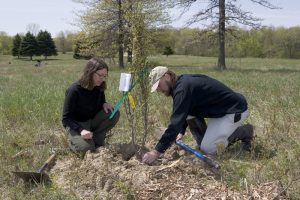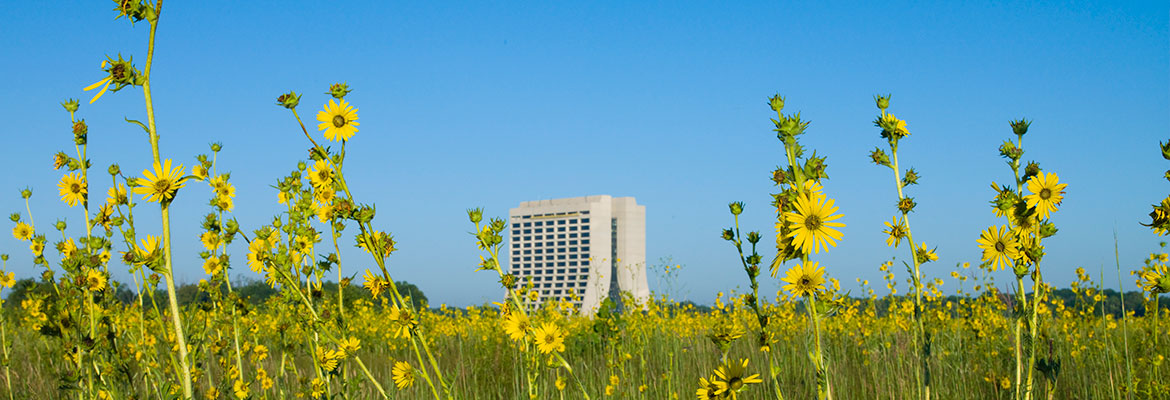
Shrublands are important intermediary successional communities, and their structural uniqueness is important for many types of wildlife, especially birds. Volunteers (pictured) help plant shrubs throughout the Arbor Day land management units. Photo credit: R. Hahn
Shrublands are an important intermediary successional community. Shrubs, as the name suggests, dominate the canopy while small trees, snags, grasses, and herbaceous vegetation also contribute to the dynamic structural composition. Historically, shrublands were transitional habitats, succeeding to woodlands, or became shrubby prairies as a result of frequent drought-induced fire. Shrubland communities are a shifting mosaic across the landscape, and their structural uniqueness is important for many types of wildlife, especially birds.
Many small parcels of shrubland exist at Fermilab, mostly adjacent to woodlands and savannas but also in wetlands. Soil moisture determines the dominant shrubs present. Dry-mesic shrublands can be composed of grey dogwood (Cornus racemosa), hazelnut (Corylus americana), and American plum (Prunus americana), while blue-fruited dogwood (Cornus obliqua), meadowsweet (Spirea alba), and sandbar willow (Salix interior) might dominate in wet-mesic shrublands.
The Sparrow Hedge area at Fermilab is undergoing an intensive effort to be restored to shrubland. This area currently supports a variety of weedy native and non-native trees and shrubs, such as box elder (Acer negundo), gray dogwood (Cornus racemosa), common buckthorn (Rhamnus cathartica), autumn olive (Elaeagnus umbellata), and American plum (Prunus americana). While plant composition is not desirable, the structural heterogeneity is excellent for nesting and migrating shrubland birds such as Bell’s vireo (Vireo bellii) and yellow-breasted chat (Icteria virens). Restoration efforts are focused on removing all invasive woody plants, as well as native trees and shrubs taller than 10 feet. Annual prescribed fires will be conducted to suppress non-native vegetation and promote healthy shrub growth.

